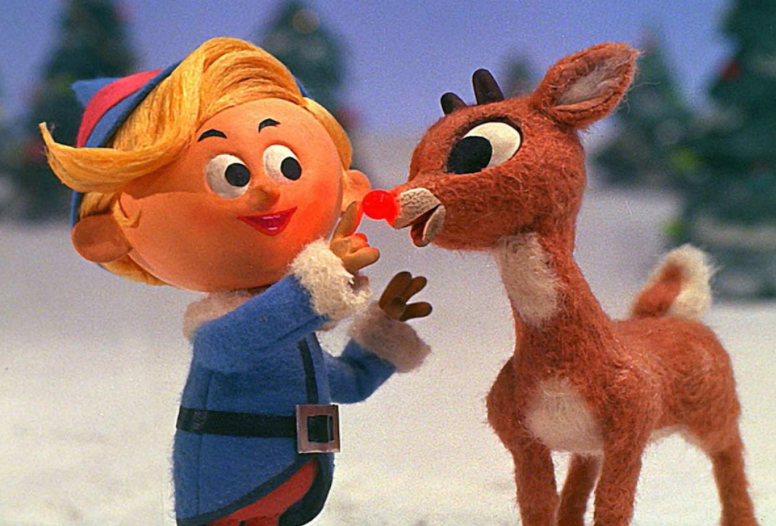In an exciting twist for holiday programming, the 1964 claymation special Rudolph the Red-Nosed Reindeer will air on NBC this year for the first time since the 1970s. This monumental return celebrates the 60th anniversary of the beloved Rankin/Bass production, marking a significant moment in the legacy of the longest-running Christmas TV special in the United States. As the story of Rudolph prepares to captivate another generation, it’s worth exploring why this classic remains so beloved, the groundbreaking techniques behind its creation, and its lasting cultural impact.
The Origins of Rudolph’s Story
The story of Rudolph dates back to 1939, when Robert L. May, a copywriter for Montgomery Ward, penned the tale of the red-nosed reindeer as a promotional booklet for the department store. Rudolph’s story quickly resonated with audiences, selling over two million copies within a few years. The tale gained further popularity in 1949 when Gene Autry’s recording of the song Rudolph the Red-Nosed Reindeer became a chart-topping holiday hit.
By the 1960s, Rudolph had become a household name, paving the way for Rankin/Bass Productions to adapt the story into a television special. Using their signature stop-motion animation technique, dubbed “Animagic,” they brought Rudolph and his friends to life in a way that would leave an indelible mark on holiday traditions.
The Plot: A Journey of Acceptance and Belonging
At its heart, Rudolph the Red-Nosed Reindeer is a story about overcoming adversity and embracing individuality. Rudolph, born with a glowing red nose, is shunned by his fellow reindeer and excluded from their games. Feeling out of place, Rudolph embarks on a journey of self-discovery, joined by two equally outcast companions: Hermey, an elf who dreams of being a dentist, and Yukon Cornelius, a gold prospector.
Their adventures take them to the Island of Misfit Toys, a refuge for unloved and forgotten playthings. Eventually, Rudolph returns to the North Pole, where his once-mocked red nose becomes an invaluable asset, guiding Santa’s sleigh through a treacherous Christmas Eve storm. Rudolph’s triumph is a poignant reminder that our unique qualities can be our greatest strengths.
The Making of a Classic: Rankin/Bass and Animagic
The claymation style of Rudolph the Red-Nosed Reindeer was revolutionary at the time. Created by Rankin/Bass Productions, the animation involved meticulously moving figurines frame by frame to create the illusion of motion. The intricate process required hundreds of hours of labor, but the result was a visual style that felt both magical and timeless.
The characters themselves were crafted with extraordinary care. Rudolph’s nose, for instance, was equipped with a small lightbulb to achieve its signature glow. The sets, constructed with intricate detail, brought the North Pole and its whimsical inhabitants to life. The Animagic technique became a hallmark of Rankin/Bass productions, influencing other classics like Frosty the Snowman and Santa Claus Is Comin’ to Town.
Despite being nearly six decades old, Rudolph the Red-Nosed Reindeer continues to hold a special place in the hearts of viewers. Here are some of the reasons why it remains so beloved:
For many families, watching Rudolph the Red-Nosed Reindeer is a cherished holiday tradition. Its annual broadcast creates a sense of continuity and nostalgia, connecting viewers across generations.
Rudolph the Red-Nosed Reindeer has left an indelible mark on popular culture. Its influence can be seen in everything from holiday merchandise to references in films and television shows. The special has also inspired countless parodies, tributes, and reimaginings, further cementing its status as a cultural touchstone.
Beyond its entertainment value, Rudolph’s story carries an important social message. By celebrating individuality and promoting kindness, the special encourages viewers to embrace diversity and treat others with empathy—lessons that remain as relevant today as they were in 1964.
Rudolph’s Return to NBC
The 2023 holiday season marks a historic moment for Rudolph the Red-Nosed Reindeer. For the first time since the 1970s, the special will air on NBC, reintroducing it to a new generation of viewers. The network’s decision to bring Rudolph back reflects the enduring popularity of the special and its ability to resonate with audiences in an ever-changing media landscape.
To celebrate its 60th anniversary, NBC will air Rudolph the Red-Nosed Reindeer twice: first on December 6 at 8 p.m. ET and again on December 12. These broadcasts provide an opportunity for longtime fans to relive the magic and for new viewers to experience the story for the first time.
As Rudolph the Red-Nosed Reindeer continues to capture hearts, its legacy shows no signs of fading. In a world that often feels divided, the special’s message of acceptance and community serves as a beacon of hope and joy. Whether you’re a nostalgic viewer or a first-time watcher, Rudolph’s story reminds us of the power of kindness, the beauty of uniqueness, and the importance of finding light in the darkness.
Rudolph the Red-Nosed Reindeer is more than just a holiday special—it’s a cherished piece of cultural history that has brought joy and inspiration to millions. From its groundbreaking animation to its heartwarming themes, the special embodies the magic of the holiday season. As it airs on NBC this year for the first time in decades, Rudolph the Red-Nosed Reindeer proves that its message of love and acceptance is as timeless as ever. So gather your loved ones, settle in with a cup of cocoa, and let Rudolph’s red nose guide you through another unforgettable Christmas season.
No comments yet.







